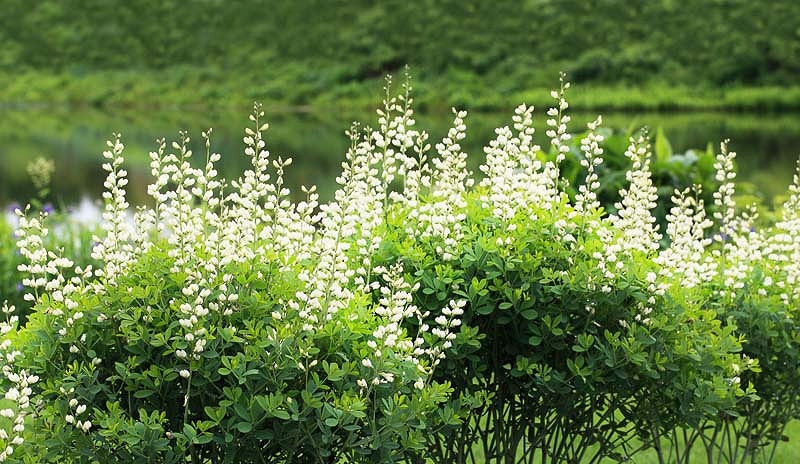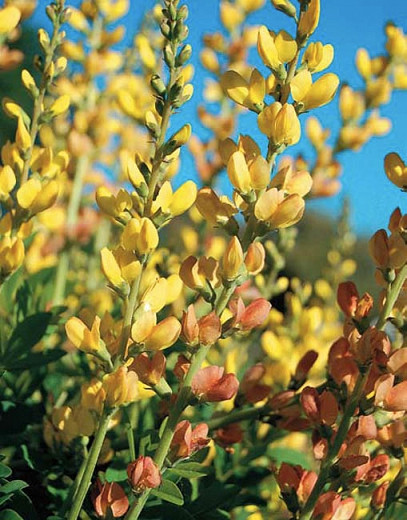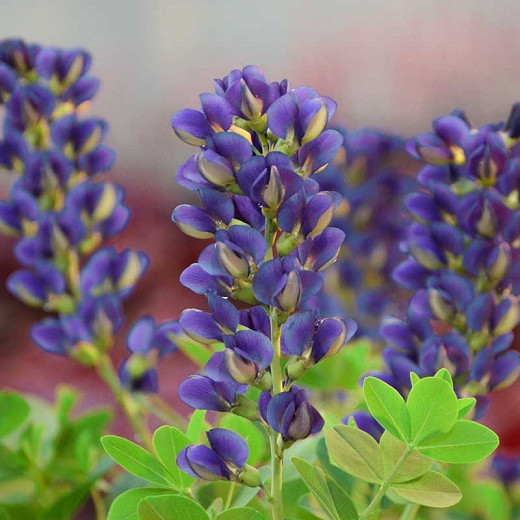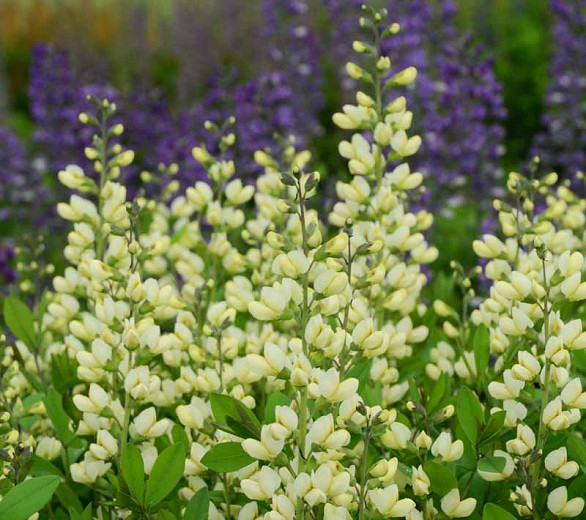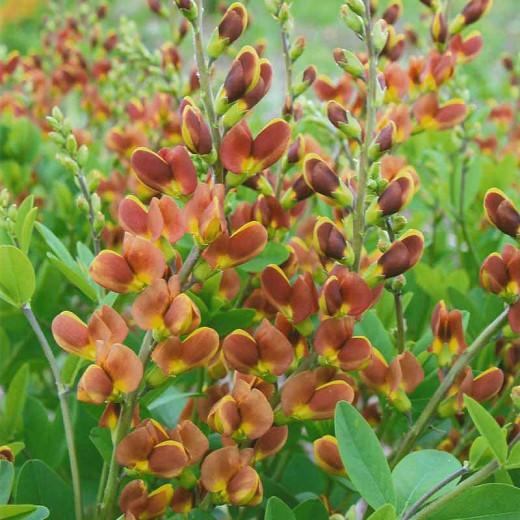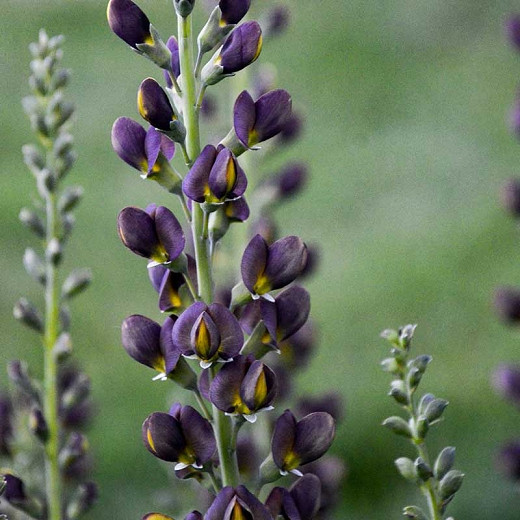Baptisia alba (White Wild Indigo)
A grand wildflower, Baptisia alba (White Wild Indigo) is an upright perennial with a long season of interest. In spring and summer, this southeastern United States native bears long spikes of pea-shaped, white flowers, resembling Lupines. They last for about three weeks and attract butterflies and bees. When the flowers fade away, the lovely blue-green, trifoliate leaves remain neat and form a lovely backdrop for the other perennials in the garden. If left untrimmed, the plant forms interesting inflated seedpods turning deep black in the fall. They often remain attached to the naked winter stems and are valued additions to dried flower arrangements. Looking good with almost everything, White Wild Indigo is a striking specimen for the small garden where an easy-to-grow, long-lived plant is desired.
- Grows up to 24-48 in. tall (60-120 cm) and 24-30 in. wide (60-75 cm).
- Performs best in full sun in average, dry to medium, well-drained soils. Tolerates partial shade, but full sun is preferred. Tolerates poor soils and drought. Do not disturb once established as it develops a deep taproot that is easily damaged if you try to transplant it.
- Looks stunning in beds and borders, cottage gardens, prairies or meadows, and native plant gardens. Great as a specimen plant or in small groups.
- Not susceptible to pest or disease issues, deer resistant.
- Trimming foliage after bloom helps maintain a rounded plant appearance, but you will miss out on the attractive seed pods which are great to use in dried flower arrangements.
- Propagate by division (fall) or seeds. Sow unstratified seed in fall or stratified seed in spring. Plants germinate quickly but do not flower for up to 3 years.
- This plant has been fatal to cows and can be irritating to humans if ingested.
- Native to the southeastern United States.
Requirements
| Hardiness | 5 – 8 |
|---|---|
| Climate Zones | 1, 1A, 1B, 2, 2A, 2B, 3, 3A, 3B, 4, 5, 6, 7, 8, 9, 10, 11, 12, 13, 14, 15, 16, 17, 18, 19, 20, 21, 22, 23, 24 |
| Plant Type | Perennials |
| Plant Family | Baptisia – False Indigo |
| Exposure | Full Sun, Partial Sun |
| Season of Interest | Spring (Mid,Late)Summer (Early,Mid,Late)FallWinter |
| Height | 2' – 4' (60cm – 120cm) |
| Spread | 2' – 3' (60cm – 90cm) |
| Spacing | 30″ – 36″ (75cm – 90cm) |
| Water Needs | Low, Average |
| Maintenance | Low |
| Soil Type | Clay, Loam, Sand |
| Soil pH | Acid, Neutral |
| Soil Drainage | Well-Drained |
| Characteristics | Dried Arrangements, Cut Flowers, Showy |
| Native Plants | United States, Midwest, Illinois, Indiana, Iowa, Kansas, Michigan, Minnesota, Missouri, Nebraska, Ohio, Wisconsin, Northeast, Maryland, New York, Southeast, Alabama, Arkansas, Florida, Georgia, Kentucky, Louisiana, Mississippi, North Carolina, South Carolina, Tennessee, Virginia, Southwest, Oklahoma, Texas |
| Tolerance | Clay Soil, Drought, Dry Soil |
| Attracts | Bees, Butterflies |
| Garden Uses | Beds and Borders |
| Garden Styles | Informal and Cottage, Prairie and Meadow |
